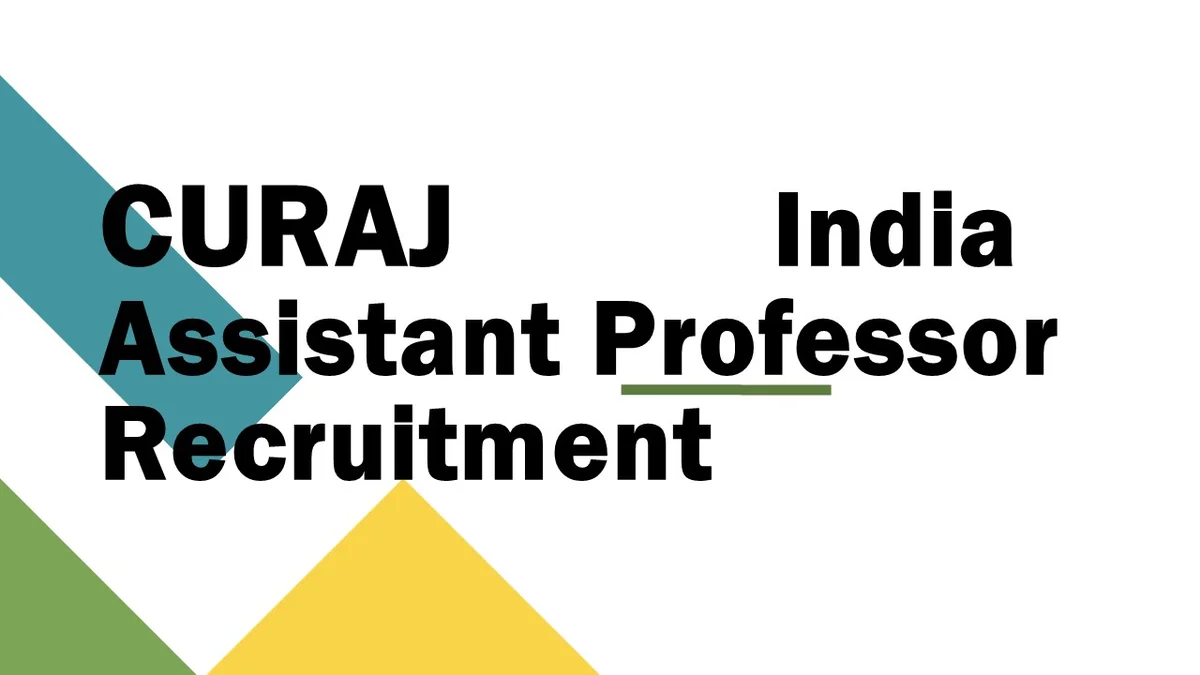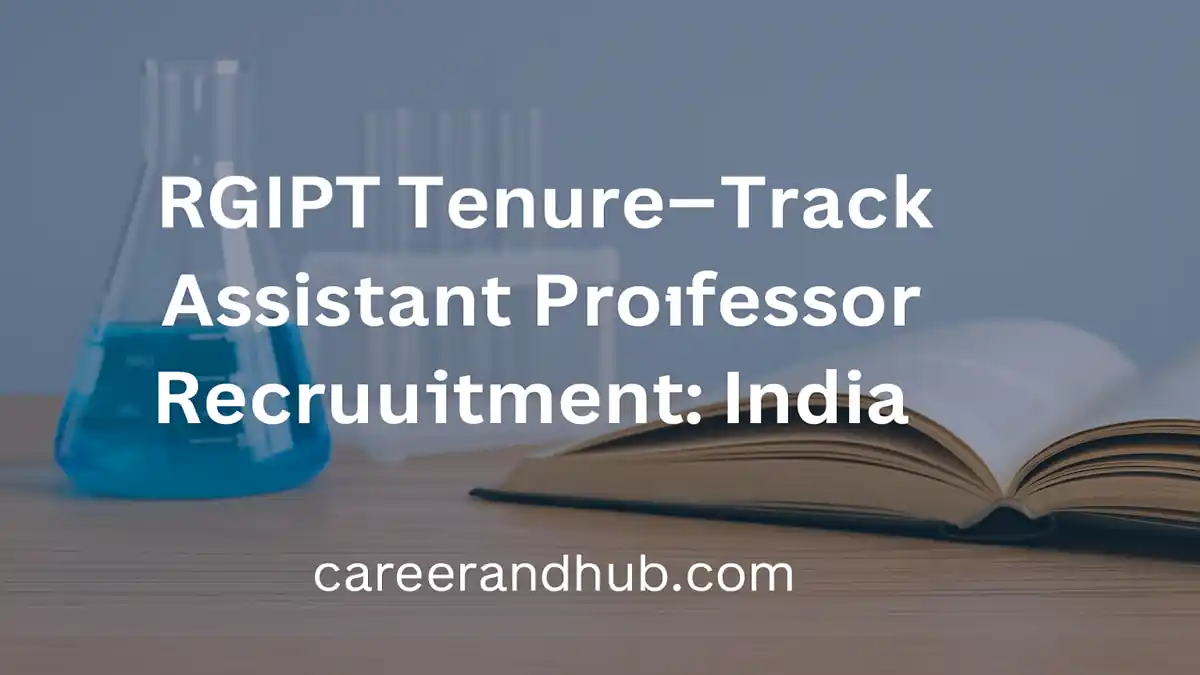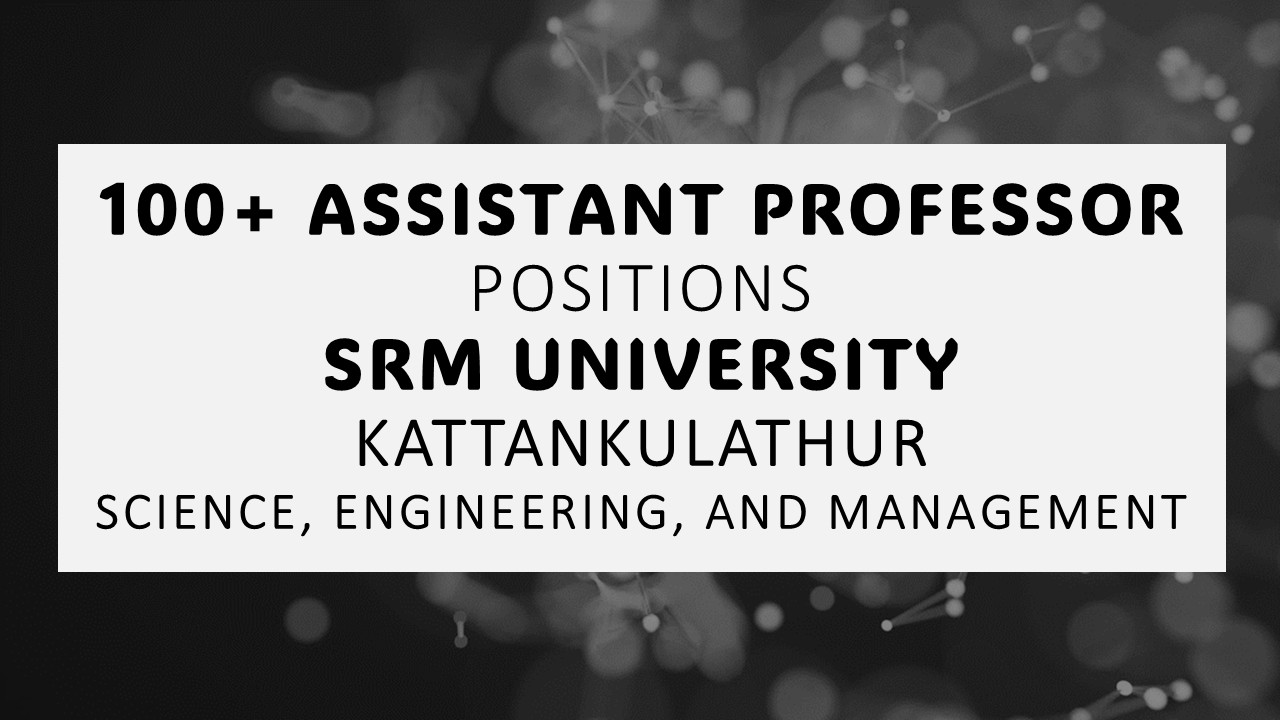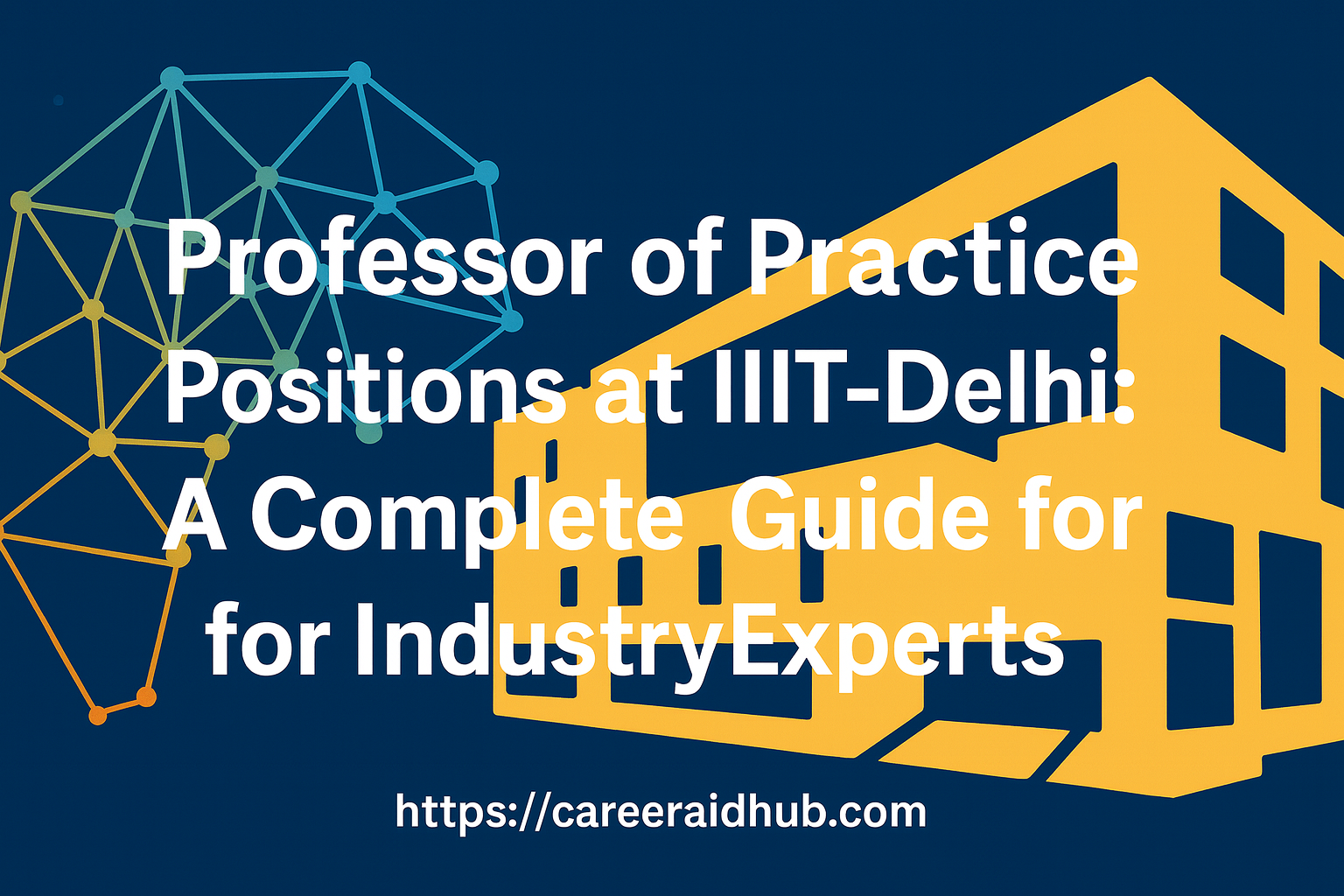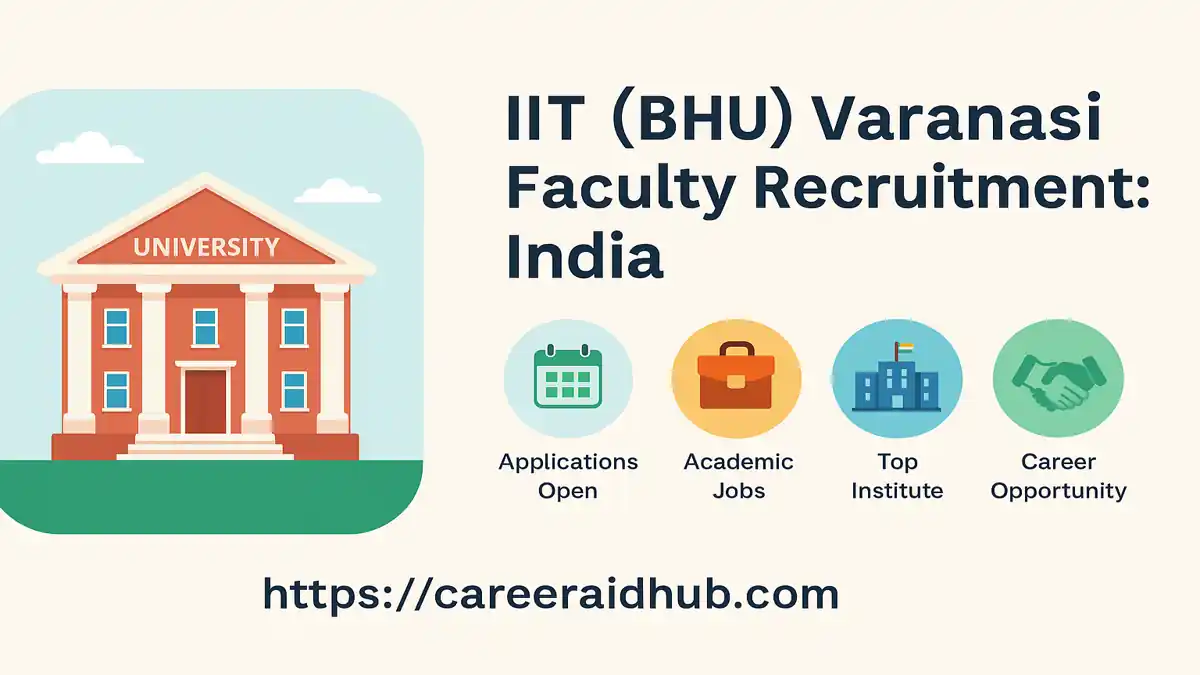CURAJ Adds Assistant Professor (OBC) in Neuroscience (Health Science): Apply Now
CURAJ has issued an official addendum announcing one Assistant Professor (OBC) position in the Neuroscience Programme under Health Science. Below is a comprehensive, applicant-friendly guide covering eligibility, dossier requirements, CU-Chayan submission steps, and timelines—refined for clarity, SEO, and AdSense compliance, while preserving all original sections and data.
What’s new in this addendum?
Addendum No.: R/F.168/Rectt./2025/1775 (dated 22 August 2025)
New post added: Assistant Professor (OBC-01), Neuroscience Programme, Department of Health Science
Part of: CURAJ’s Rolling Advertisement issued via the CU-Chayan portal
Deadlines: Online application up to 30 September 2025; hard-copy submission up to 10 October 2025.
Note for earlier applicants: If you already applied for Assistant Professor (OBC-01), Neuroscience under Advt. No. 4410 dated 13 March 2024, you do not need to re-apply; your previous application will be considered.
Why this matters (context for candidates)
This addendum formalizes category-specific availability within Neuroscience and clarifies the live timeline under CURAJ’s rolling cycle. In practice, it helps eligible OBC candidates align dossiers, verify compliance with UGC norms, and complete both the online and hard-copy stages without ambiguity.
Eligibility at a
glance (as per addendum)
Essential qualifications — meet one of the following pathways:
-
-
Master’s degree in Neurology / Neurobiology / Neuroscience / Neuro-Biochemistry / Cognitive Neuroscience / Neurogenetics / Clinical Neuroscience / Computational Neuroscience (awarded by an Indian university or a recognized/accredited foreign university).
OR -
Master’s in Life Sciences and a Ph.D. specializing in one of the Neuroscience sub-areas listed above (awarded by an Indian university or a recognized/accredited foreign university).
-
Additional requirements (must-meet criteria):
-
-
Minimum marks: at least 50% in the Master’s degree and 55% in at least two preceding examinations. This ensures consistent academic performance across prior degrees.
-
NET: National Eligibility Test (NET) in Life Sciences is required, reflecting UGC’s baseline for entry-level faculty competence.
-
NET exemption: Candidates awarded a Ph.D. in line with UGC Regulations, 2018 (Para 4.1(I)(A)(ii)) are exempt from NET.
-
Desirable: Ph.D. in a relevant Neuroscience field, which can strengthen your research-teaching profile and improve shortlisting prospects.
-
Interpreting the criteria
The dual-pathway model (Master’s directly in Neuroscience areas, or Life Sciences Master’s plus Ph.D. in a
Who should consider applying?
This opening suits scholars working at the interface of fundamental neuroscience and applied health science. Profiles that often map well include:
-
-
Cognitive & Clinical Neuroscience: candidates with exposure to neuropsychology, clinical protocols, or translational assessments.
-
Neuro-Biochemistry / Neurogenetics: researchers focusing on molecular mechanisms, biomarkers, or genotype-phenotype links.
-
Computational Neuroscience: applicants skilled in data analysis, neural modeling, or machine learning for brain-health datasets.
-
Candidates with evidence of teaching competence, early publications, and a clear three-to-five-year research trajectory aligned with CURAJ’s interdisciplinary strengths will stand out. Work spanning neuro-omics, brain-health analytics, neuro-AI, neuropharmacology, or rehabilitation technologies can uniquely enrich the programme.
Demonstrating fit
Go beyond listing topics. Briefly articulate how your research questions connect to learning outcomes in Health Science, how your methods can support student projects, and how your collaborations (clinical or computational) can seed joint grants and publications.
How to apply (high-level)
-
-
Register/Log
in on the CU-Chayan portal for CURAJ’s rolling recruitment and select the Assistant Professor (OBC-01), Neuroscience Programme under Health Science. -
Complete the form carefully—capture academic details, category status, and role-relevant experience; ensure your specialization explicitly matches the listed Neuroscience areas.
-
Upload documents: degree certificates, mark sheets, category certificate (OBC), experience certificates, publication list, best publications (PDFs), and proof of compliance with UGC Regulations where relevant.
-
Submit online before the last date and dispatch the hard-copy with enclosures by the specified deadline. The addendum confirms the rolling advertisement context and sets the online/hard-copy cut-offs.
-
Pro tip: Curate a succinct Research-Teaching-Service narrative in your CV and cover letter. Show how your Neuroscience expertise advances Health Science curricula, student mentoring, and collaborative research—and indicate the facilities you can quickly leverage.
Internal resources for preparation (recommended reads)
-
-
How to write a compelling research statement: see our in-depth guide on planning aims, methods, and milestones.
-
Faculty job dossiers: explore our checklists for CV structuring, teaching statements, and evidence curation.
(Explore related resources on CareerAidHub for step-by-step templates and examples.)
-
Documents & dossier checklist (suggested)
-
-
Complete CV (include ORCID/Scopus/Google Scholar links; highlight roles, grants, and supervised projects).
-
Statement of Purpose / Cover Letter tailored to Neuroscience (Health Science) and CURAJ’s interdisciplinary environment.
-
Research statement (2–3 pages): key contributions, facilities required, 3–5-year plan, and fundable work-packages.
-
Teaching statement (1–2 pages): course interests (e.g., Neurophysiology, Cognitive Neuroscience, Neural Data Analysis, Translational Neuroscience), pedagogy, and assessment strategies.
-
Best publications (3–5 PDFs) with a short annotation of novelty and your precise contribution.
-
UGC-NET certificate (Life Sciences) or Ph.D. award proof under UGC-compliant regulations for NET exemption.
-
Degree & marksheets demonstrating the 50%/55% thresholds.
-
Category certificate (OBC) as per Government of India norms.
-
Referees (2–3) with current affiliations and emails.
-
Quality assurance tips
Ensure document naming is consistent, page headers include your name and role, and PDFs are scan-clean and searchable. Additionally, cross-check dates, grade formats, and journal indexing to pre-empt verification queries.
Crafting a strong application: practical tips
-
-
Show curricular value: Propose 2–3 new/updated courses (e.g., Computational Neuroscience with Python, Neuroimaging & Data Analytics, Clinical Neuroscience & Rehabilitation). Supply micro-syllabi to demonstrate immediate teach-readiness.
-
Demonstrate research fit: Map your work to Health Science priorities—for instance, neurodegenerative diseases, mental health, neurodevelopment, brain-computer interfaces, biomarker discovery, or population neuroscience.
-
Plan for grants: Identify target schemes (e.g., national missions, ANRF/DST calls, DBT/ICMR programmes) and outline a 2-year pilot that can commence with modest resources and student projects.
-
Mentorship & labs: Explain how you will mentor undergraduate/postgraduate projects, build industry/clinical linkages, and share core facilities to accelerate outputs.
-
Service & outreach: Suggest seminar series, journal clubs, and community health outreach to strengthen academic culture and societal relevance.
-
Expert insight (backlink-worthy element)
Shortlisted faculty often succeed by aligning a signature method (e.g., EEG/ERP analysis pipeline or computational modeling toolkit) with a signature question (e.g., early biomarkers for cognitive decline). This pairing anchors courses, lab work, and grant pitches around a coherent theme.
Understanding evaluation (typical contours)
CURAJ follows university and UGC norms for selection. You can usually expect:
-
-
Shortlisting based on minimum eligibility, research output, teaching profile, and dossier coherence.
-
A seminar/teaching demonstration to assess delivery, depth, and student engagement.
-
An interaction/interview focused on research plans, funding potential, collaboration possibilities, and service commitments.
-
Preparing for each stage
-
-
For shortlisting, ensure your specialization keywords align precisely with Neuroscience sub-areas listed in the addendum.
-
For the seminar, design a clear narrative with 2–3 learning outcomes and one interactive element (e.g., a quick data interpretation task).
-
For the interview, keep a one-page grants roadmap and a facilities-use plan that shows feasibility from day one.
-
Key dates & reference numbers (keep handy)
-
-
Online application deadline: 30 September 2025
-
Hard-copy submission deadline: 10 October 2025
-
Addendum No.: R/F.168/Rectt./2025/1775 (22 August 2025)
-
Post: Assistant Professor (OBC-01), Neuroscience Programme, Department of Health Science
-
Rolling advertisement reference: through CU-Chayan portal (Advt. No. stated in the addendum)
-
Note for earlier applicants: Applications against Advt. No. 4410 (13 March 2024) remain valid—no re-application needed.
-
Final take
This addendum opens a targeted opportunity in Neuroscience within Health Science at a Central University. Candidates who align their specialization to the listed areas, package evidence with clarity, and demonstrate immediate curricular value will be well placed. Plan your dossier early, confirm category documentation, and complete both online and hard-copy steps on time. For any uncertainties, rely on the official CURAJ addendum and the CU-Chayan portal for current instructions and updates.
Summary & Call to Action
If you meet the criteria and can articulate a cohesive research-teaching agenda, submit your application promptly and keep your referees informed. Afterwards, track the CU-Chayan portal for communications. We recommend reviewing and updating this page every quarter during active cycles and each August ahead of likely review windows to maintain freshness for search and readers.
Vacancy Snapshot (Feature Details)
| Feature | Details |
|---|---|
| Program | Assistant Professor (OBC-01), Neuroscience Programme — Health Science |
| Country | India |
| Funded | Central University of Rajasthan (CURAJ) — Government of India (as per UGC norms) |
| Duration | As per university/UGC norms (Assistant Professor cadre; typically Level-10 entry on 7th CPC pay matrix) |
| Study Mode | Not applicable (faculty position) |
| Eligibility | As per addendum: Master’s in listed Neuroscience fields or Master’s in Life Sciences + Ph.D. in Neuroscience specialization; marks thresholds; NET in Life Sciences or Ph.D.-based exemption; OBC category as per GoI norms |
| Financial | Pay and allowances as per CURAJ/UGC & 7th CPC norms for Assistant Professor (Level-10) |
| Fields | Neurology, Neurobiology, Neuroscience, Neuro-Biochemistry, Cognitive Neuroscience, Neurogenetics, Clinical Neuroscience, Computational Neuroscience |
| Deadline | Online: 09/2025; Hard-copy: 10/2025 |
| Website | CU-Chayan (CURAJ) official portal |
References (official)
CURAJ Addendum — Assistant Professor Neuroscience
Frequently Asked Questions
Submit the CU-Chayan online application by 30 September and ensure the hard copy reaches CURAJ by 10 October. Therefore, plan dispatch early.
Hold a relevant Neuroscience Master’s or a Life Sciences Master’s with a Neuroscience Ph.D.; additionally, meet marks thresholds, NET or Ph.D.-based exemption, and valid OBC certificate.
Yes, NET in Life Sciences is required; however, CURAJ exempts candidates with a Ph.D. awarded under UGC Regulations meeting the prescribed criteria.
Degrees in Neurology, Neurobiology, Neuroscience, Neuro-Biochemistry, Cognitive Neuroscience, Neurogenetics, Clinical Neuroscience, or Computational Neuroscience qualify; moreover, recognized foreign degrees remain acceptable.
Secure at least 50% in your Master’s and 55% in two preceding examinations; consequently, ensure transcripts clearly show compliance.
Register on CU-Chayan, select the Neuroscience post, complete details, upload documents, submit online, and dispatch the hard copy on time; additionally, retain dispatch proof.
Upload degrees, marksheets, NET or Ph.D. exemption proof, OBC certificate, publications, best papers, experience certificates, and referees; furthermore, ensure PDFs are searchable.
CURAJ typically appoints Assistant Professors at Level-10 under the 7th CPC; nevertheless, check the official notification for exact pay and allowances.
Yes. Computational Neuroscience counts as an eligible specialization; additionally, demonstrate teaching readiness and research fit with Health Science priorities.
Premium Mentorship for a Stronger Application
- Premium Mentorship: personalised 1:1 guidance for this and similar opportunities
- In-depth review of your CV, academic profile, and key statements
- Aligned with international selection criteria so your profile matches what panels expect
- Stronger, more compelling narrative for highly competitive calls
- Step-by-step support from opportunity mapping to final submission (fee-based)

